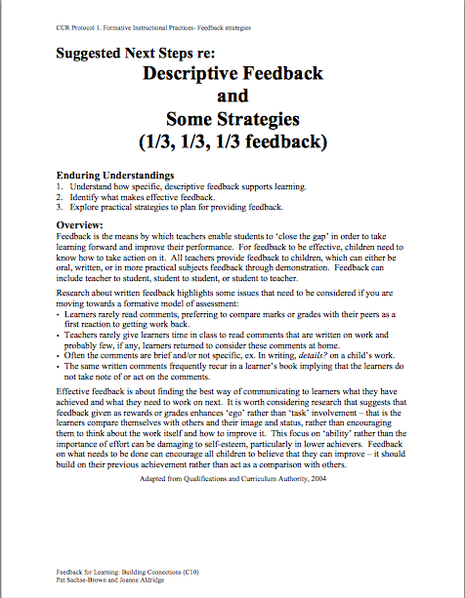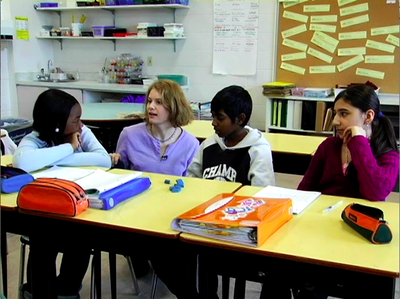Descriptive Feedback: An Overview
Descriptive feedback is specific information, in the form of written comments or verbal conversations, that help the learner understand what she or he needs to do in order to improve.
Descriptive feedback is the most powerful tool for improving student learning.
Black, Harrison, Lee & Wiliam (2003)
"Benefits of Descriptive Feedback"
Dave Del Gobbo
This video uses a metaphor to explain the benefits of assessment for learning methodologies and descriptive feedback. (Published on Oct 31, 2012)
Dave Del Gobbo
This video uses a metaphor to explain the benefits of assessment for learning methodologies and descriptive feedback. (Published on Oct 31, 2012)
It is the nature, rather than the amount, that is critical when giving students feedback.
~Black and Wiliam (2002)
It is critical to understand how specific, descriptive feedback supports learning: Feedback can encourage all students to believe they have the ability to improve their work if they are
not compared with others and they are allowed to build on their previous performances. Feedback
that supports learning involves choice for the learner in deciding what and how to receive that
feedback.
It is important to be able to identify what makes effective feedback: Feedback is most effective when it focuses on the task, is specific in its nature as to what the learner has done well and what they need to work on next, and is given while the task is still relevant. It opens the opportunity for mistakes to be viewed as learning opportunities when time is provided for students to take action.
There are practical strategies to plan for providing effective feedback: When messages are clear about the student's work, and not based on comparisons, competition, or ability, the student clearly profits from feedback.
It is important to be able to identify what makes effective feedback: Feedback is most effective when it focuses on the task, is specific in its nature as to what the learner has done well and what they need to work on next, and is given while the task is still relevant. It opens the opportunity for mistakes to be viewed as learning opportunities when time is provided for students to take action.
There are practical strategies to plan for providing effective feedback: When messages are clear about the student's work, and not based on comparisons, competition, or ability, the student clearly profits from feedback.
Descriptive Feedback and Some Strategies
The document below provides an overview of descriptive and evaluative feedback styles. The authors discuss research and rationales about why deep descriptive feedback matters.
 http://standardstoolkit.k12.hi.us/wp-content/uploads/2013/01/CCR.Protocol_1.Descriptive_Feedback_Strategies.pdf
http://standardstoolkit.k12.hi.us/wp-content/uploads/2013/01/CCR.Protocol_1.Descriptive_Feedback_Strategies.pdf
Sachse-Brown, P., & Aldridge, J. (n.d.). Feedback for learning: Building connections. [CCR Protocol: Formative instructional practices-feedback strategies]. Retrieved June 5, 2015 from standardstoolkit.k12.hi.us/wp-content/uploads/2013/01/CCR.Protocol_1.Descriptive_Feedback_Strategies.pdf



